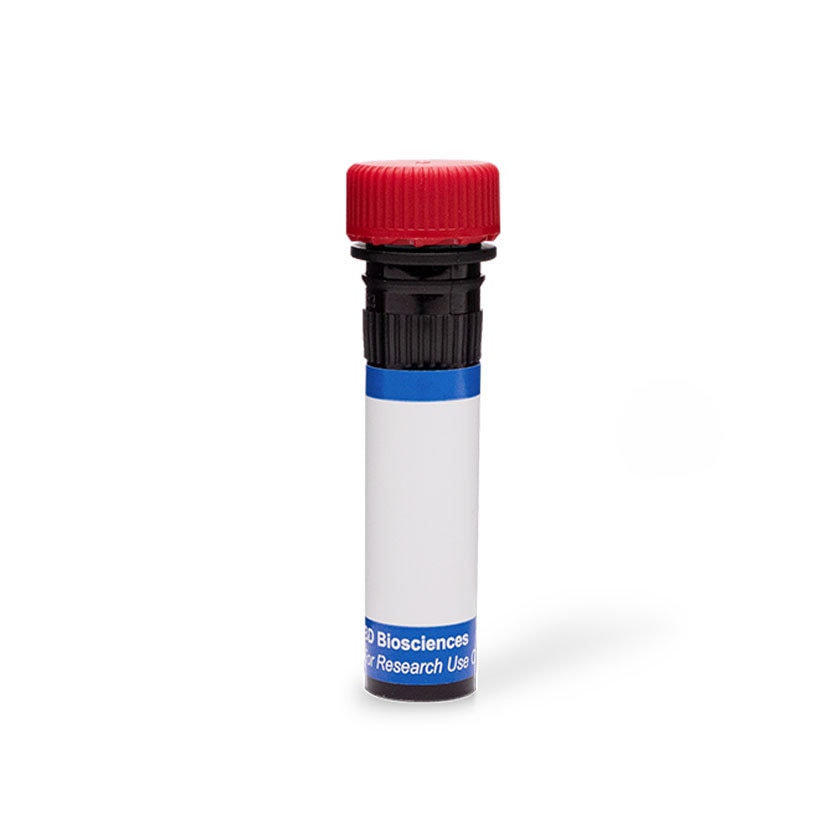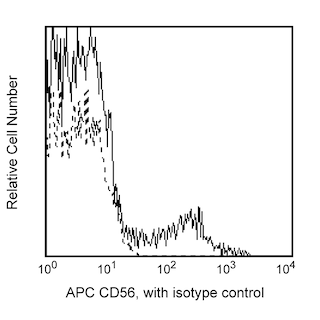-
抗体試薬
- フローサイトメトリー用試薬
-
ウェスタンブロッティング抗体試薬
- イムノアッセイ試薬
-
シングルセル試薬
- BD® AbSeq Assay
- BD Rhapsody™ Accessory Kits
- BD® OMICS-One Immune Profiler Protein Panel
- BD® Single-Cell Multiplexing Kit
- BD Rhapsody™ TCR/BCR Next Multiomic Assays
- BD Rhapsody™ Targeted mRNA Kits
- BD Rhapsody™ Whole Transcriptome Analysis (WTA) Amplification Kit
- BD® OMICS-Guard Sample Preservation Buffer
- BD Rhapsody™ ATAC-Seq Assays
- BD® OMICS-One Protein Panels
-
細胞機能評価のための試薬
-
顕微鏡・イメージング用試薬
-
細胞調製・分離試薬
-
- BD® AbSeq Assay
- BD Rhapsody™ Accessory Kits
- BD® OMICS-One Immune Profiler Protein Panel
- BD® Single-Cell Multiplexing Kit
- BD Rhapsody™ TCR/BCR Next Multiomic Assays
- BD Rhapsody™ Targeted mRNA Kits
- BD Rhapsody™ Whole Transcriptome Analysis (WTA) Amplification Kit
- BD® OMICS-Guard Sample Preservation Buffer
- BD Rhapsody™ ATAC-Seq Assays
- BD® OMICS-One Protein Panels
- Japan (Japanese)
-
Change country/language
Old Browser
Looks like you're visiting us from United States.
Would you like to stay on the current country site or be switched to your country?
BD Pharmingen™ PE Mouse Anti-Human TIM-3 (CD366)
クローン 7D3 (RUO)

Multiparameter flow cytometric analysis of TIM-3 (CD366) expression on human peripheral blood cells. Human whole blood was stained with APC Mouse Anti-Human CD56 antibody (Cat. No. 555518) and either PE Mouse IgG1 κ Isotype Control (Cat. No. 554680) or PE Mouse Anti-Human TIM-3 (CD366) antibody (Cat. No. 563422). Erythrocytes were lysed with BD Pharm Lyse™ Lysing Buffer (Cat. No. 555899). Flow cytometric analysis was performed using a BD™ LSR II Flow Cytometer System.
Left Panel: The two-parameter flow cytometric contour plots show the correlated expression patterns of TIM-3 (CD366) expression (or Ig Isotype control staining) versus side scattered light-signals (SSC-A) distinguishing monocyte (intermediate SSC-A) and lymphocyte (low SCC-A) populations.
Right Panel: The two-color flow cytometric contour plots show the correlated expression of CD56 versus TIM-3 (CD366) [or Ig Isotype control staining]. Gated events with the forward and side-light scattering characteristics of viable lymphocytes are displayed.


Multiparameter flow cytometric analysis of TIM-3 (CD366) expression on human peripheral blood cells. Human whole blood was stained with APC Mouse Anti-Human CD56 antibody (Cat. No. 555518) and either PE Mouse IgG1 κ Isotype Control (Cat. No. 554680) or PE Mouse Anti-Human TIM-3 (CD366) antibody (Cat. No. 563422). Erythrocytes were lysed with BD Pharm Lyse™ Lysing Buffer (Cat. No. 555899). Flow cytometric analysis was performed using a BD™ LSR II Flow Cytometer System.
Left Panel: The two-parameter flow cytometric contour plots show the correlated expression patterns of TIM-3 (CD366) expression (or Ig Isotype control staining) versus side scattered light-signals (SSC-A) distinguishing monocyte (intermediate SSC-A) and lymphocyte (low SCC-A) populations.
Right Panel: The two-color flow cytometric contour plots show the correlated expression of CD56 versus TIM-3 (CD366) [or Ig Isotype control staining]. Gated events with the forward and side-light scattering characteristics of viable lymphocytes are displayed.

Multiparameter flow cytometric analysis of TIM-3 (CD366) expression on human peripheral blood cells. Human whole blood was stained with APC Mouse Anti-Human CD56 antibody (Cat. No. 555518) and either PE Mouse IgG1 κ Isotype Control (Cat. No. 554680) or PE Mouse Anti-Human TIM-3 (CD366) antibody (Cat. No. 563422). Erythrocytes were lysed with BD Pharm Lyse™ Lysing Buffer (Cat. No. 555899). Flow cytometric analysis was performed using a BD™ LSR II Flow Cytometer System.
Left Panel: The two-parameter flow cytometric contour plots show the correlated expression patterns of TIM-3 (CD366) expression (or Ig Isotype control staining) versus side scattered light-signals (SSC-A) distinguishing monocyte (intermediate SSC-A) and lymphocyte (low SCC-A) populations.
Right Panel: The two-color flow cytometric contour plots show the correlated expression of CD56 versus TIM-3 (CD366) [or Ig Isotype control staining]. Gated events with the forward and side-light scattering characteristics of viable lymphocytes are displayed.


BD Pharmingen™ PE Mouse Anti-Human TIM-3 (CD366)

Regulatory Statusの凡例
Any use of products other than the permitted use without the express written authorization of Becton, Dickinson and Company is strictly prohibited.
Preparation and Storage
Product Notices
- This reagent has been pre-diluted for use at the recommended Volume per Test. We typically use 1 × 10^6 cells in a 100-µl experimental sample (a test).
- An isotype control should be used at the same concentration as the antibody of interest.
- Source of all serum proteins is from USDA inspected abattoirs located in the United States.
- Caution: Sodium azide yields highly toxic hydrazoic acid under acidic conditions. Dilute azide compounds in running water before discarding to avoid accumulation of potentially explosive deposits in plumbing.
- For fluorochrome spectra and suitable instrument settings, please refer to our Multicolor Flow Cytometry web page at www.bdbiosciences.com/colors.
- Please refer to www.bdbiosciences.com/us/s/resources for technical protocols.
関連製品




The 7D3 monoclonal antibody specifically binds to T cell immunoglobulin mucin 3 (TIM-3) which is also known as, CD366, or T-cell immunoglobulin and mucin domain-containing protein 3 (TIMD-3/TIMD3). CD366 is encoded by the HAVCR2 gene (Hepatitis A virus cellular receptor 2). CD366 is a type I transmembrane glycoprotein and belongs to the human TIM family (along with TIM-1 and TIM-4) within the immunoglobulin superfamily. CD366 is expressed on Th1, Tc1, Th17, Treg, NK T, and NK cells. CD366 is also expressed on dendritic cells, mast cells, monocytes, and macrophages. It is not expressed by Th2 and B cells. CD366 helps maintain peripheral immune tolerance and homeostasis. CD366 regulates macrophage activation and is a negative regulator of Th1 cell function. Crosslinking of cell surface CD366 by binding to Galectin-9 and/or phosphatidylserine appears to play an important role in either positively or negatively regulating leucocyte functions, such as cytokine production or the phagocytosis of apoptotic cells. CD366 may also be useful as an AML stem cell surface marker because it appears to be more highly expressed by AML leukemia stem cells than by normal bone marrow hematopoietic stem cells.

Development References (12)
-
Domenig C, Zheng XX, Sabatos CA, et al. Tim-3 inhibits T helper type 1-mediated auto- and alloimmune responses and promotes immunological tolerance. Nat Immunol. 2003; 4(11):1093-1101. (Biology). View Reference
-
Freeman GJ, Casasnovas JM, Umetsu DT, DeKruyff RH. TIM genes: a family of cell surface phosphatidylserine receptors that regulate innate and adaptive immunity.. Immunol Rev. 2010; 235(1):172-89. (Biology). View Reference
-
Hafler DA, Kuchroo V. TIMs: Central regulators of immune responses. J Exp Med. 2008; 205:2699-2701. (Biology). View Reference
-
Jan M, Chao MP, Cha AC, et al. Prospective separation of normal and leukemic stem cells based on differential expression of TIM3, a human acute myeloid leukemia stem cell marker. Proc Natl Acad Sci U S A. 2011; 108(12):5009-5014. (Biology). View Reference
-
Khademi M, Illes Z, Gielen AW, et al. T Cell Ig- and mucin-domain-containing molecule-3 (TIM-3) and TIM-1 molecules are differentially expressed on human Th1 and Th2 cells and in cerebrospinal fluid-derived mononuclear cells in multiple sclerosis. J Immunol. 2004; 172(11):7169-7176. (Biology). View Reference
-
Lee J, Su EW, Zhu C, et al. Phosphotyrosine-dependent coupling of Tim-3 to T-cell receptor signaling pathways. Mol Cell Biol. 2011; 31(19):3963-3974. (Biology). View Reference
-
Lee JS, Park MJ, Park S, Lee ES. Differential expression of T cell immunoglobulin- and mucin-domain-containing molecule-3 (TIM-3) according to activity of Behcet's disease. Br J Dermatol. 2012; 65(3):220-222. (Biology). View Reference
-
Moorman JP, Wang JM, Zhang Y, et al. Tim-3 pathway controls regulatory and effector T cell balance during hepatitis C virus infection. J Immunol. 2012; 189(2):755-766. (Biology). View Reference
-
Ndhlovu LC, Lopez-Verges S, Barbour JD, et al. Tim-3 marks human natural killer cell maturation and suppresses cell-mediated cytotoxicity. Blood. 2012; 119(16):3734-3743. (Biology). View Reference
-
Rodriguez-Manzanet R, DeKruyff R, Kuchroo VK, Umetsu DT. The costimulatory role of TIM molecules. Immunol Rev. 2009; 229(1):259-270. (Biology). View Reference
-
Wang F, Wan L, Zhang C, Zheng X, Li J, Chen ZK. Tim-3-Galectin-9 pathway involves the suppression induced by CD4+CD25+ regulatory T cells. Immunobiology. 2009; 214(5):342-349. (Biology). View Reference
-
van de Weyer PS, Muehlfeit M, Klose C, Bonventre JV, Walz G, Kuehn EW. A highly conserved tyrosine of Tim-3 is phosphorylated upon stimulation by its ligand galectin-9. Biochem Biophys Res Commun. 2006; 351(2):571-576. (Biology). View Reference
Please refer to Support Documents for Quality Certificates
Global - Refer to manufacturer's instructions for use and related User Manuals and Technical data sheets before using this products as described
Comparisons, where applicable, are made against older BD Technology, manual methods or are general performance claims. Comparisons are not made against non-BD technologies, unless otherwise noted.
For Research Use Only. Not for use in diagnostic or therapeutic procedures.